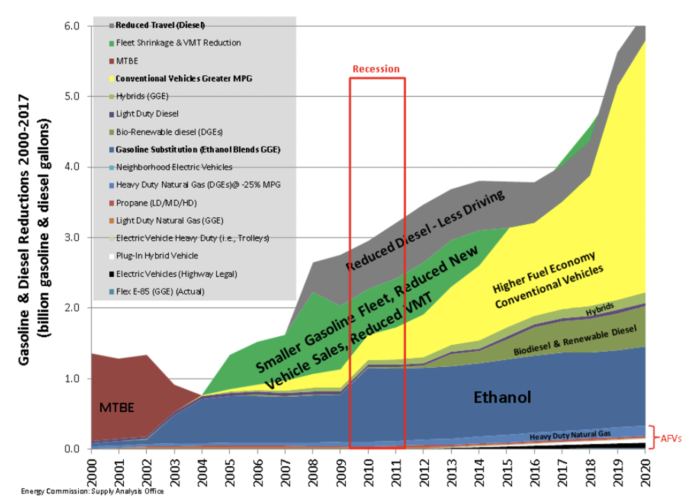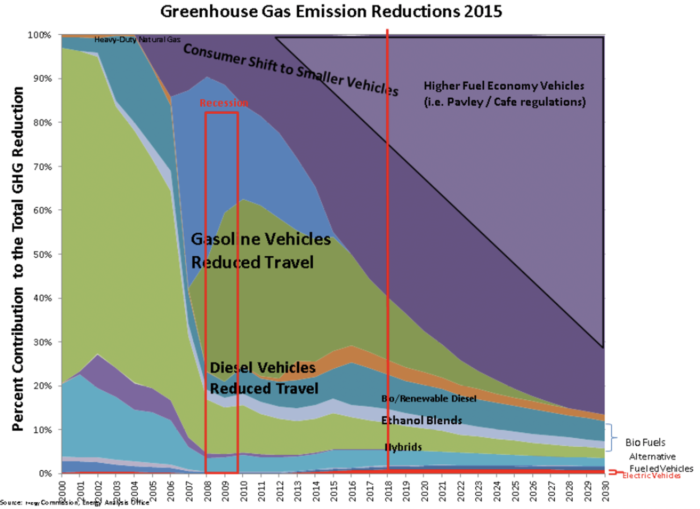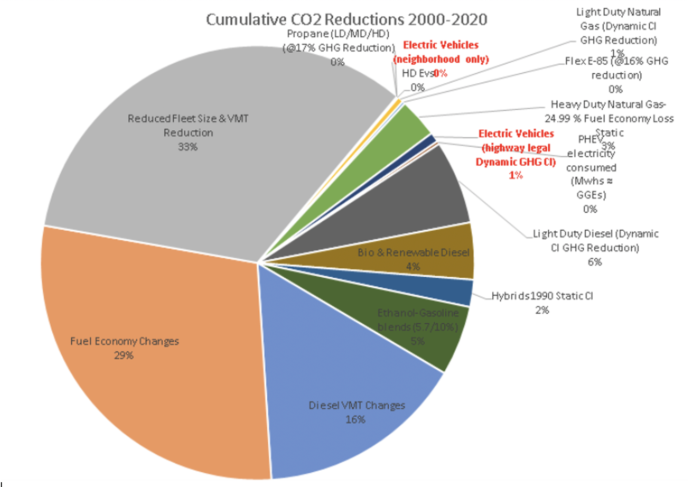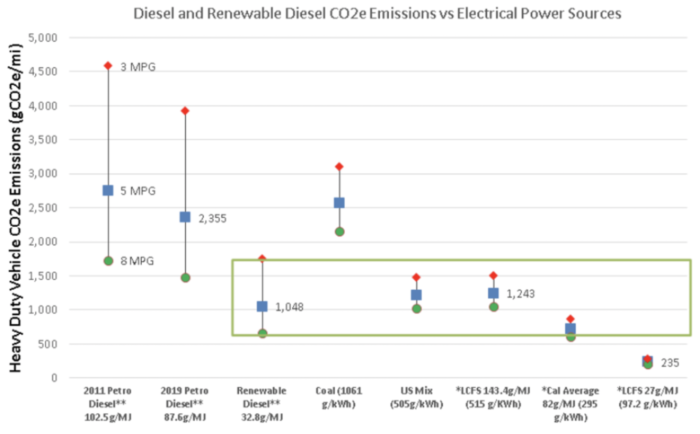What’s up with the new 100% ZEV mandate in California? An internal Stillwater conversation (Part 1)
Link to article: https://stillwaterassociates.com/whats-up-with-the-new-100-zev-mandate-in-california-an-internal-stillwater-conversation-part-1/
September 23, 2020
By Kendra Seymour
As editor of Stillwater’s LCFS Newsletter and a contributor on many of Stillwater’s LCFS-related client projects, I spend most of my time researching and reporting around renewables markets and the programs which incentivize the development, deployment, and adoption of alternative fuels. Today, shortly after California’s governor Gavin Newsom announced his Executive Order mandating 100% ZEV car sales by 2035, I caught up with a few of my colleagues via Slack to get a better understanding of the issues around electrification. Thinking that this dialogue might be of interest to our readers, I’ve published it here. Our conversation has been edited for clarity and length. (Edit: Our conversation spilled over into the next day. Part 2 of this conversation can now be found here.)
Slack conversation Wednesday, September 23, 2020
Dave Hackett: Hey, team. Be sure to read Governor Newsom’s EV proclamation. He wants all the state agencies to cooperate in reducing petroleum and improving CI.
Megan Boutwell: I also found the LA Times’ coverage helpful.
Leigh Noda: Note that for everything but Light-Duty (LD), the goals are qualified “where feasible”.
Adam Schubert: I just realized that, for LD, the goal is for new vehicle sales while, for medium- and heavy-duty (M+HD), the goal is for use.
Kendra Seymour: So, given turnover lag time, the LD vehicle pool isn’t expected to be fully electrified as quickly as the M+HD pool, correct?
Adam: The 2035 goal for new LD sales being 100% zero-emissions vehicles (ZEV) means gasoline vehicles will still be on the road beyond 2050. The goal for M+HD use being 100% ZEV by 2045 does imply that turnover will be completed sooner. Making that reality will be much, much more difficult.
Kendra: Perfect. Thanks for the clarification.
Gary Yowell: Looks like our Governor found a work-around to the Trump administration’s actions with the Environmental Protection Agency (EPA) and against the California Air Resources Board (CARB). What a mess this EO will be if implemented. I noted the EO is Climate Change centric.
Kendra: Given your expertise, Gary, what would you suggest as a better (less “messy”) approach for addressing climate change and transport fuels’ contribution specifically?
Gary: Mandating greater renewable fuels to lower CO2 emissions at the scale policy makers are already mandating. The vehicle mandate approach is the weakest, slowest, tool in the shed. ZEVs are absolute slowest and most expensive option.
Kendra: Is the vehicle mandate approach the slowest tool because of vehicle turnover rates?
Gary: Yes. ZEVs are further crippled by low customer acceptance. And due to ZEVs’ significantly lower vehicle miles traveled (VMT) relative to the displaced internal combustion engine (ICE) vehicles, there is even less CO2 reductions from ZEVs compared to their ICE peers.
Kendra: Wouldn’t a both/and approach be doubly effective (i.e. increasing renewable/low-CI fuels AND also trying to shift the fleets to EV for the longer-term)?
Gary: Yes. The vehicle approach will help at the back end of goals, so less renewables need to be produced in the latter years. The logic flaw is apparent, however, when one looks at the premise of CO2 reductions needed by the cumulative CO2 reductions from both approaches. Renewable fuels’ cumulative CO2 reductions dwarf ZEV reductions to-date and for well into the future.
Adam: Renewable fuels have been effective because the benefits are achieved without requiring consumers to do anything different. Getting to “zero” does ultimately require vehicle mandates due to fleet turnover requirements, infrastructure investments, etc. But pushing faster than consumers are prepared to go has always been a challenge with many examples of failure. For example, today’s WSJ has a nice article on EU automakers not meeting their emission targets as consumers are demanding SUVs.
Kendra: Makes sense. So, some combination of the two is the right approach, but maybe this EO is overly ambitious re: timeline…
Adam: History suggests that CARB will start with a very aggressive timeline as they intentionally aim to be technology-forcing. They will then revise and adapt as needed to avoid shutting down the state.
Kendra: Shoot for the moon, land in the stars … and all that.
Leigh: Great point, Adam. The vast majority of the gains in GHG emissions have been done without any changes required for consumers (i.e: ethanol blended into gasoline, renewable and bio diesel (RD and BD) incorporated into the diesel pool, photovoltaic (PV) power substituted in for coal). At least the changes are marginal (ie: smaller cars). This should be a strong point in the mandate vs. market discussion. The recent experience with various COVID mandates should tell us a lot about the effectiveness of mandates that impact the consumer!
Gary: Here are old graphs of California’s actual, historic CO2 reductions and projection. Note the slim ZEV contribution relative to the others. To reduce CO2 emissions, empirical evidence suggests options other than ZEVs. Generally, increased fuel demand (and the corresponding CO2 emissions) due to population growth has more than offset the savings attributable to alternative fuels.
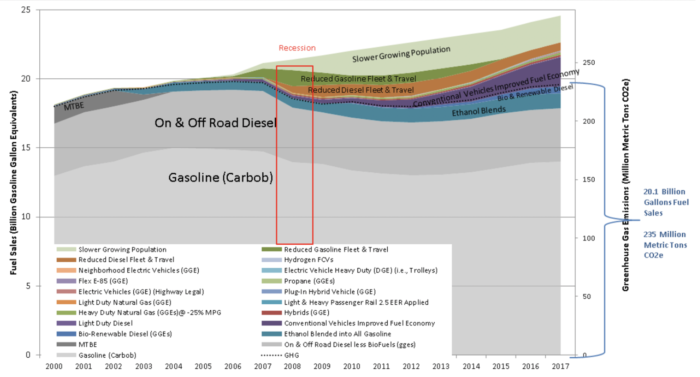
Kendra: I’m having some difficulty fully understanding all of these figures without more explanation, but I get that EVs haven’t reduced CO2 emissions much yet. Isn’t that because there just aren’t that many EVs yet, and in order to increase the EV piece of the carbon-reduction pie, one would need to increase EV usage? Seems like you’re saying EVs just don’t reduce CO2 emissions at all, and we should abandon them as an option. Am I misunderstanding? I ask because it seems to me that EVs aren’t failing at reducing CO2 emissions (compared to other sources of reductions) because EVs as a technology fail to reduce CO2 emissions, but rather because the solution isn’t scaled up … yet. Similarly, RD at one point represented a minuscule portion of the achieved carbon reduction, but now that RD is scaled up it represents a bigger piece of the carbon-reduction pie. And thinking ahead: At some point, when the whole diesel pool in California is saturated with RD, that fuel pool will have essentially reached its maximum carbon reduction for that engine type, at which point another technology (e.g. EVs) will be required to get to the next level of carbon reduction. Starting that roll-out now (given fleet turnover rates) seems logical so that when we reach the time when we need these new technologies for the next level of reductions, we’ve already prepared and are well on our way. What am I missing here?
Gary: Kendra, it has taken 20 years for ZEVs to displace less than 1% of the state’s GHG emissions. In 10 years, RD and BD have reduced four times as much. Remember this graph below, RD/BD have the same CO2 reductions per mile, (at a minimum) and RD/BD reduce even more CO2 (annually due to RD/BD greater annual VMT driven) than ZEVs based on the latest CARB LCFS program data. After the entire diesel fleet is using RD/BD, there is no additional CO2 emissions reduction that the ZEV can provide. Moving forward, doubling or tripling ZEVs is likely to happen, BUT even this will not keep pace with RD/BD and other CO2 reduction options.
Kendra: You’re saying 100% use of RD/BD in the current fleet of diesel engines produces the same amount of CO2 emissions reductions as replacing that entire fleet with ZEVs?
Gary: ZEVs may be worth doing for consumers willing to pay the added $20k per vehicle, and willing to accept less driving range, and longer refueling time.
Kendra: But this is a function of the youth of this technology and the early stages of its roll-out rather than a function of the technology itself. If government subsidies to the petroleum industry were rerouted to the EV industry, suddenly you have twice the impact in assisting this new technology to become cost competitive and more quickly adopted. Part of that incentivization could also be used to replace liquid fuel stations with fast battery swapping stations, and then you’ve solved the inconvenience issue for consumers (you can “fuel up” quickly with a battery swap rather than plugging in, and you’re on your way again just like you could with your gas/diesel car). Furthermore, if consumers can swap out batteries rather than plugging in to charge, those batteries could be charged in low-demand hours. This would, of course, require all batteries and charging plugs to be compatible/interchangeable…
Gary: Even so, government lacks the compelling health-based evidence that supports mandating ZEVs, against the public’s interest, to buy a more expensive lower utility vehicle. Government has the duty to demonstrate the ZEV has superior and compelling environmental (health-based) benefits. ZEVs are only cleaner than the average vehicle emission, they are no cleaner, and in fact dirtier than the cleanest 20-30% of the vehicle fleet (my rough estimate). In 1990-2000 a ZEV mandate could have been argued on environmental grounds. Today, though, vehicle emission progress has made diesel engines’ exhaust and toxic emissions cleaner, and RD/BD has made diesel engines equal to or better than ZEVs on CO2.
Kendra: How is that possible when an electric vehicle has no emissions? (assuming, of course, that that vehicle was fueled with renewably sourced electricity like hydro, wind, solar, RNG, etc.) I know we’ve discussed this regarding PM and NOx or VOC emissions, but it doesn’t seem to hold up when we begin talking about CO2. What am I missing?
Gary: ZEVs have no tailpipe emissions, but they do have “Wells-to-Wheel” emissions. The graph shows the CO2 power plant emissions from California Power Plants to recharge the ZEVs. (See Cal Average: 82 g/MJ). Sun and Wind power are available in limited times and are included in the Cal Average emission rate, so is hydro too. Most ZEVs recharge a night-with combustion sources. Also, Sun power is very expensive for vehicle fuel. So, ZEV owners will pay more for energy than they would if they used RD. I was at the Public Utilities Commission hearing, where several HD EV transit bus operators were complaining that conventional electricity rates were too high for their EVs relative to diesel fuel.
Yes, 100% RD/BD in the current fleet of diesel vehicles produces the same or greater CO2 emission reductions as replacing the entire fleet with ZEVs. Also, the ZEV mandate is only for applications where ZEVs are “practical” RD/BD can fuel all applications.
Kendra: In Oregon, where our electricity is almost all renewable, is this still the case? If so, how?
Gary: Oregon’s electricity mix was 25% coal, 21% natural gas, 43% hydro, 5% wind, 1.33% solar in 2018. But remember that power generation mix and emissions vary radically by state and by year, and are all moving downward due to governmental policy mandates.
Kendra: Hmmm… according to EIA data, Oregon was at 70% renewable generation and less than 5% coal electricity generation. Coal is on its way out in Oregon (the last coal-fired power plant – in Boardman – is set to close later this year).
Leigh: There might be imported power. EIA is in-state generation.
Kendra: Good point, Leigh. I guess even though Oregon is a big-time net exporter of power, that just means we export some of our “clean” power and import potentially less clean power. (Editor’s note: In fact, Oregon does import electricity, including coal-powered electricity.) Even at 70% renewable electricity, though, wouldn’t EVs be more beneficial to the environment than ICE engines running BD/RD?
Gary: What CARB did for the LCFS is really good for estimating “renewables.” I recall it shows the time of day and season for power sources. So, for mostly night-time recharging, one can see what time and what month renewables are available. The energy commission has 8760 power generation profile, meaning CARB has hour-by-hour data for electricity generation every day of the year (365 days/year * 24 hrs/day = 8760 hours). These data show just how varied power generation is based on time of day and season.
Kendra: Ok, so different sources of electricity generation “surge” at different times of day/year and are also used in real-time. As such, EVs plugged in at night use no solar power because the sun isn’t out just then, and all that solar power was used during daylight hours.
Gary: Right. Electricity generation has to match very close (almost exactly) to the power demand of every appliance and ZEV plugged in at every second of the day or else “blackouts” occur or circuits are tripped. The more non-steady renewables are in the power-generation mix, the more unstable power is.
Kendra: Cool. So, wouldn’t a mix of renewables get us there? Solar for daytime, wind whenever it blows, hydro for most of the year, and RNG to fill in the gaps … together achieving a sufficient flow to power the grid? Then EVs that are plugged in for the night (or whenever) can also be set by their owners to act as “storage” which the grid could pull from as needed. I mean, with all these commitments from companies, states, countries, etc. to be running on 100% renewable electricity by xxxx year, it seems like people who know more than me think this is possible…
Leigh: It is possible, and that is the challenge. Unfortunately, those who advocate this approach do not typically acknowledge that:
1) People do not behave according to the societal optimal (charge only when there is surplus power),
2) Hydro is first dependent on the requirements for water flow in rivers to protect endangered species,
3) Solar and wind are up to mother nature’s whims, and
4) The complexities created due to overlapping and conflicted regulatory agencies.
Given all this, we should drive to that end but don’t have blinders to the issues.
Kendra: Good points, Leigh. My initial thoughts before I call it a night:
1) Incentivize optimal societal behavior with cheaper power in times of surplus power or kick-backs for being plugged in and available as “storage” to be pulled from.
2) Fair point.
3) Sure, but they can be predicted/anticipated fairly accurately by meteorologists, allowing for planning to accommodate changes in weather (i.e. backfilling with power generation from other more constantly available sources).
4) Ugh. Red tape.
Thanks for the feedback. Helpful discussion.
Leigh: I like that you are open to ideas.
Edit: This conversation spilled over into the next day. Part 2 of this conversation can now be found here.
Do you have a question for Stillwater Associates about California’s new ZEV Executive Order or how to manage the effects on your business? Our team of highly experienced experts is here to help. Contact us!
Tags: EV, EVs, LCFS, ZEV, ZEVsCategories: Policy, Technology Development

